TAY CREGGAN
30 YARRA STREET HAWTHORN, BOROONDARA CITY
-
Add to tour
You must log in to do that.
-
Share
-
Shortlist place
You must log in to do that.
- Download report
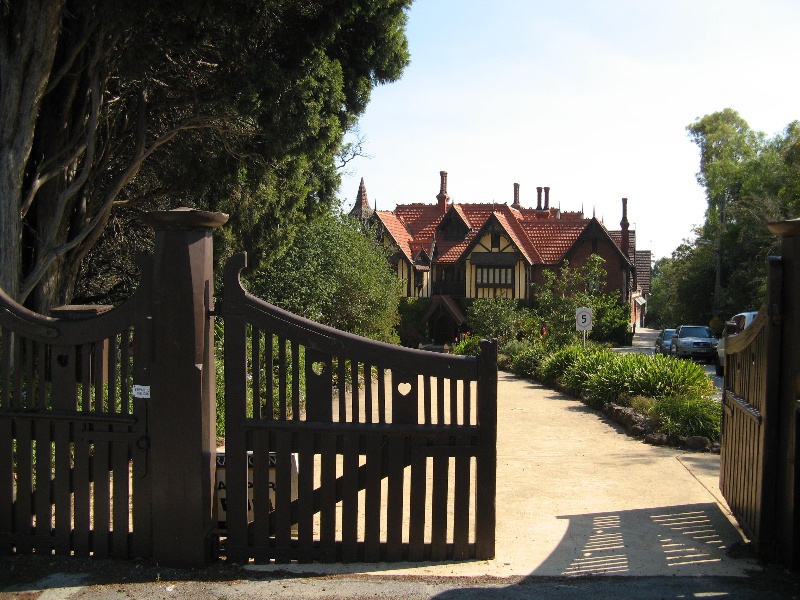

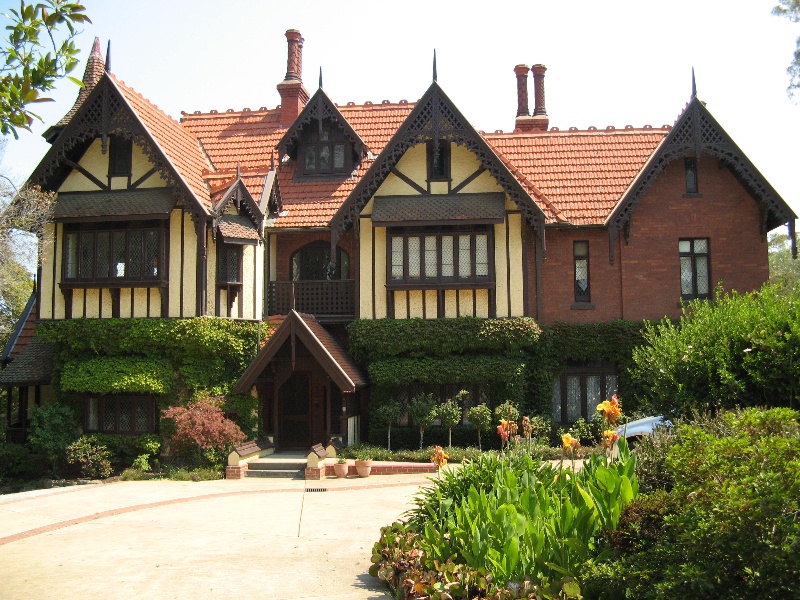
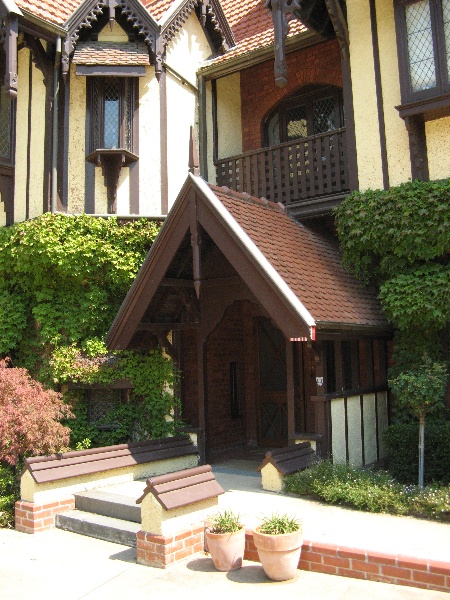
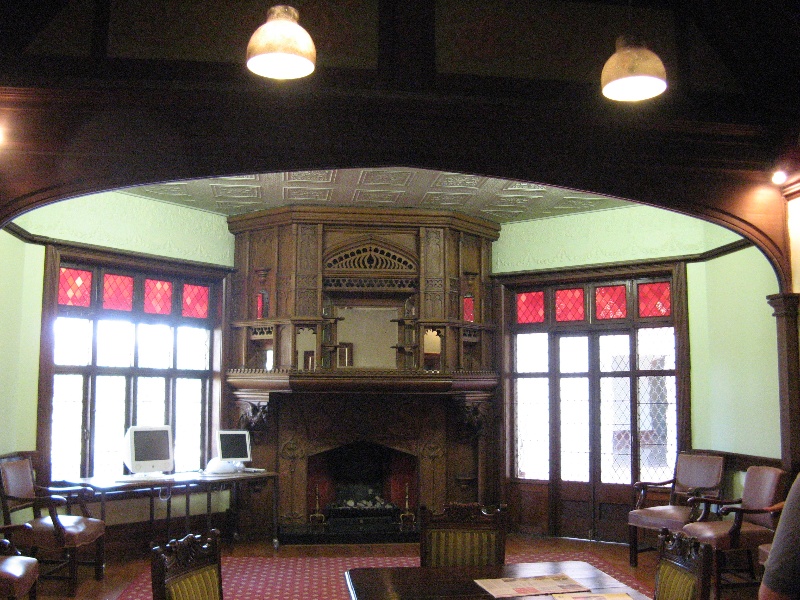
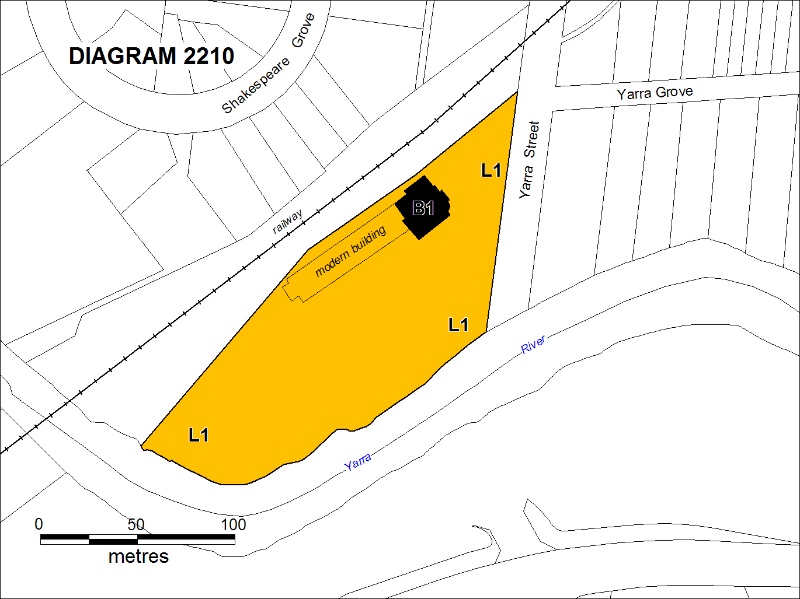

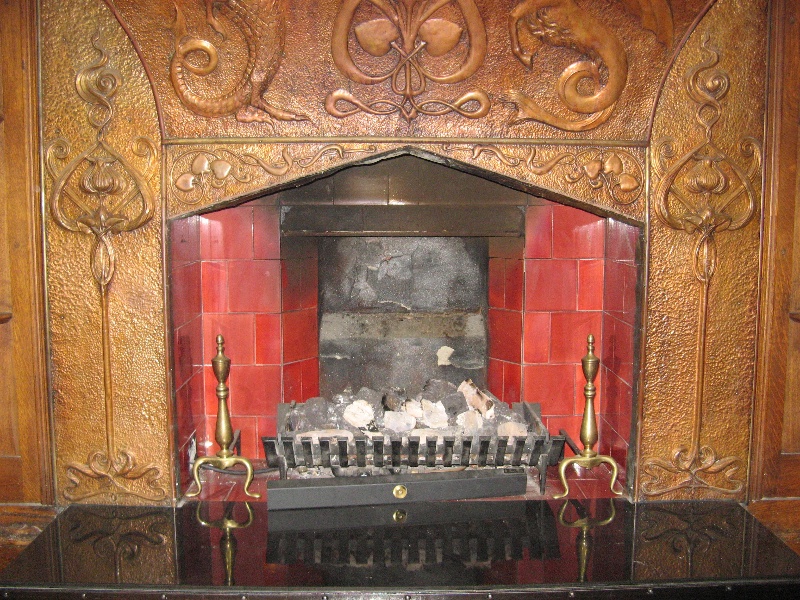

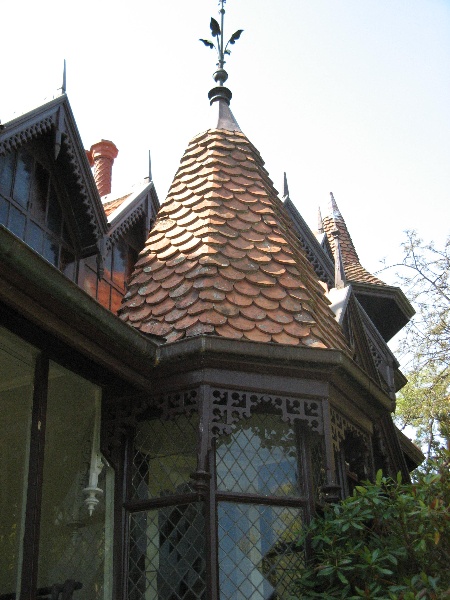
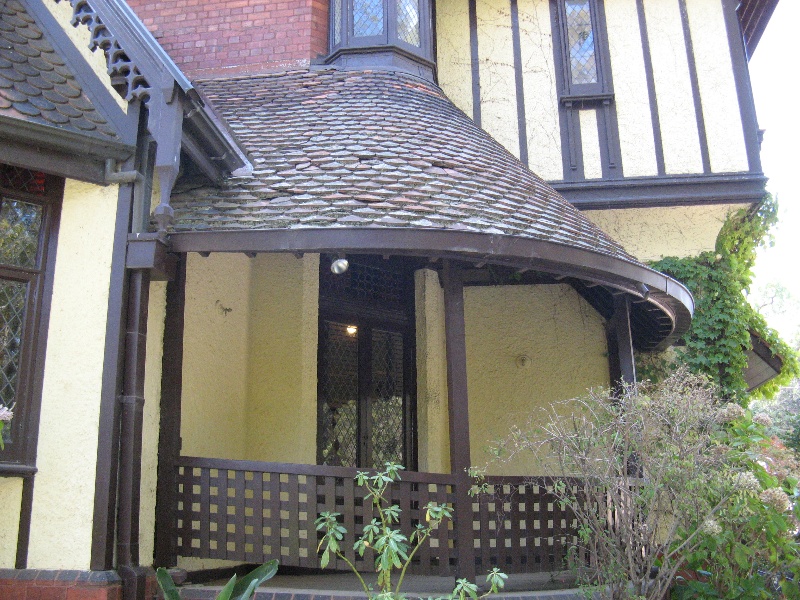




Statement of Significance
What is significant?
Tay Creggan was built by the prominent Melbourne architect Robert Guyon Whittlesey Purchas (known as Guyon) as his own home. He bought the land, a 1.5 hectare sloping site between the railway line and the Yarra River, in 1889 and built the house in 1891-2, but ran into financial difficulties at the beginning of the 1890s depression and sold the house in 1892. Purchas was one of the most prominent architects in Melbourne around the turn of the century, one of the first to be influenced by the English Arts and Crafts movement, and helped to establish the journal Arts and Crafts in 1895. The house was bought by Michael Spencer, whose family crest appears above the fireplace in the hall. Purchas designed a number of changes to the house for Spencer, including the conversion of the ballroom to a grand billiard room. Following Spencer's death in 1900 his widow married A H McKean, and the house was further altered, with the enlargement of the entrance hall and new stairs constructed. In 1937 the house was purchased by the Catholic Church for the Sisters of the Holy Grail, who added the Tudor Hall and dormitories, now used as classrooms. It was sold to the Baptist Union of Victoria in 1969 for use by Strathcona Girls School, and is now their Year 9 campus. Since then extensions and renovation works have been carried out, including the replacement of the roof tiles and the addition of a large new kitchen in place of the original.
Tay Creggan is a picturesque asymmetrical red brick two storey Victorian Queen Anne Revival style house set amidst spacious grounds overlooking the Yarra River. The roof is elaborated with turrets, and with dormers and gablets with finely-worked barge boards and finials, and is covered with Marseilles pattern tiles and terracotta ridging. The red brick walls have rough-cast with brown woodwork on the front facade, and the windows are casements with small diamond-paned leadlights. The house is notable for its fine detailing, including the slender decorative chimneys characteristic of the Elizabethan period, the weather vane on the candle-snuffer roof of one of the turrets, and the small entrance porch with scalloped tiles. Internally a number of the rooms are interesting for their timbered ceilings, fireplaces, ingle-nooks and bays. The staircase is of finely worked kauri timber and the landing has a notable stained glass window by William Montgomery depicting a hunting scene, with contrasting art nouveau decoration above. The most outstanding room is the billiard room, which is remarkable for the three stained glass domes above, the enormous Scottish Oak fireplace with Art Nouveau style copper repousse work, and the carved decoration of the roof timbers, which have carved dragons on the beam ends. There are several former servants' rooms in the attic. The house retains its original entrance gates and driveway, a row of Bhutan Cypresses along Yarra Street, and some original terracing in the garden area to the east of the house.
How is it significant?
Tay Creggan is of architectural and historical significance to the state of Victoria.
Why is it significant?
Tay Creggan is architecturally significant as one of the finest examples in Victoria of the Victorian Queen Anne Revival style, incorporating many Elizabethan-period features, and as one of most picturesque houses built in Victoria in the late nineteenth century. It is significant as one of the finest works of the prominent Melbourne architect Guyon Purchas, whose late nineteenth and early twentieth century houses exemplify the Arts and Crafts approach to the 'total work of art'.
Tay Creggan is historically significant as a reminder of the way of life of the wealthiest citizens of Victoria in the late nineteenth and early twentieth century, and as the home of one of the prominent architect Guyon Purchas.
-
-
TAY CREGGAN - History
CONTEXTUAL HISTORY
The architecture
The classical boom-period architecture of the 1880s in Victoria was roundly attacked by the architects of the 1890s, who were increasingly influenced by the ideals of the English Arts and Crafts movement, which reached Australia via English and American books and journals. As Conrad Hamann notes (in Philip Goad, Melbourne Architecture, pp 78-9), 'Plaster and stucco on walls became falsity. Cast-iron columns and lacework were now cheap and nasty products from factories, with no genuine embodiment of craft or valid work. Symmetrical composition and planning were artificial, pretentious and false.' A new architecture in plain unplastered brick appeared. Though showing a marked American influence, this related to the free approach then dominating British architecture, referred to generally as the 'Queen Anne'.
According to Apperly et al (Identifying Australian Architecture, Sydney 1994, p 132) Queen Anne was the dominant style in Australian domestic architecture in the decades before and after 1900. It borrowed heavily from the houses of Richard Norman Shaw in England, which were highly eclectic in style, combining elements from many periods of traditional English building and often having a vaguely Tudor feeling. It was generally a domestic style, characterised by picturesque, asymmetrical forms in reddish face-brickwork, with painted timber detailing, dominant roofs clad with Marseilles-pattern terracotta tiles and with elaborate terracotta ridge decorations and barge-boarded gables, conical tower-like elements, dormers, tall chimneys, bays, and verandahs on more than one side, often widened to form 'piazzas'. (Apperley et al, p 135)
The architect: Robert Guyon Whittlesey Purchas (1862-1940)
[Taken largely from Harriet Edquist, Pioneers of Modernism, Carlton 2008.]
R G W (Guyon) Purchas was the son of Albert Purchas, a prominent and successful architect and engineer. He was born at Kew in a house built by his father, and was educated at the Kew High School, a leading private secondary school at the time. Following his matriculation he was articled to his father and also studied civil engineering. He established his own practice in 1884, and travelled overseas in the late 1880s. He returned after about eighteen months, and completed several houses, including the Foster homestead at Boisdale in Gippsland and two large townhouses in South Yarra and Hawthorn, before the financial collapse in the early 1890s.
Guyon Purchas was one of the most prominent architects in Melbourne around the turn of the century, and was one of the first to be influenced by the theories of the Arts and Crafts movement (expounded by William Morris and William Lethaby amongst others) in his practice, and his houses exemplify the Arts and Crafts approach to the 'total work of art'. In the mid-1890s he joined a group of artists and architects in establishing working parties where they experimented with combining applied art and design into architectural practice. He was one of a group of architects (including Francis Smart and William Tappin of Reed, Smart & Tappin, and Gordon Hyndman) and artists (including glass artist William Montgomery, sculptor Douglas Richardson and Bernard Hall, the newly appointed Director of the NGV) which established the journal Arts and Crafts, which first appeared in October 1895. Purchas wrote a number of articles for the journal 'which indicate that by the mid-1890s he was a devotee of the Arts and Crafts movement and had trained himself in the art of furniture design and metal crafts'. Hall and Purchas were responsible for the introduction of applied art training into the National Gallery schools. (Edquist, Pioneers of Modernism, p 29)
In 1904 Purchas became a fellow of the RVIA and entered into partnership with his stepson as the firm of Purchas & Teague. He retired in 1923 at the age of sixty-one, and in 1933 married his second wife Alice Pegler and lived in retirement at Olinda until his death in 1940.
HISTORY OF PLACE
In 1845 James Palmer bought 17 acres on the east side of the Yarra, now on the south side of Burwood Road extending from about Coppin Grove to the river, and built his home Burwood. About a year later he bought the next two blocks to the east, extending his estate, now 46 acres, to Yarra Street. The land, through which ran a reserve for the Hawthorn Railway, was purchased in 1871 by the actor and entrepreneur George Coppin, who subdivided it into 73 lots, known first as the Burwood Hill Estate and later as the St James Park subdivision. It was progressively sold off over the next few years.
Tay Creggan occupies three acres and three roods [1.5 hectares] on the southern part of the subdivision between the railway line and the Yarra River, two steeply sloping lots with views across the river to the south. The land was purchased in December 1876 by Henry Harwood, a theatrical manager from St Kilda, and in 1884 by Ernest Giles, a gentleman from Kew, who sold it in 1888 to Henry Butler, an East Melbourne warehouseman.
In 1889 the title was in the name of Mary Purchas, the wife of Guyon Purchas. Edquist notes that the house was built in 1891-2. The first reference to a house on this site is an 1892 Hawthorn ratebook entry. The titles show that Mary Purchas sold the land in January 1892, though Purchas is listed as resident until 1894. Purchas ran into financial problems at the beginning of the 1890s depression, as was the case with many other Melbourne architects, and sold the house, which is said to have been still unfinished.
According to Edquist, Tay Creggan
marked a distinct change in direction for the architect. It was a vibrant mix of English vernacular elements put together in an utterly romantic and picturesque way to take advantage of its prominent site. The fanciful bay window on the north-west corner had a conical roof of terracotta shingles which was surmounted by a smaller bay window that sailed through the roof, transformed into an extraordinary miniature octagonal tower with a shingle roof topped by a wrought-iron finial. Tay Creggan was more inventive than most Melbourne houses of the time ...
The house was approached by the main drive, leading from Yarra Street to the house and on to the paved stable yard to the west, with a coach house and stables (now demolished). The garden was a feature, with winding paths and shady trees, a croquet lawn, tennis court, a summer house, glass house, a pergola, an acre and a half of vegetable gardens, a cow yard and milking shed, and a path leading to a jetty on the river (all now gone). In the early days there were said to have been ten servants at Tay Creggan, including a coachman and four gardeners. The cook and three maids lived in servants' quarters at the top of the service stairs, at the bottom of which were a sewing room, store room and a butler's pantry.
In 1897 the place was bought by Michael Spencer, a 'Hawthorn Gentleman', whose family crest appears above the fireplace in the hall. The Spencers made some modifications to Purchas' design. The ballroom was redesigned to accommodate a carved Scottish oak chimney piece imported from Scotland. A minstrel's gallery, a feature that became popular with Arts and Crafts architects, was to be built above the fireplace, and had been partially installed, but the new owners enclosed this, and made the room into a billiard room, with the addition of six pillars below the floor to support the table legs. Edquist notes (p 24) that
The interior of Tay Creggan was organised around a central hall entered through a pointed archway and a broad timber door ornamented with timber studs. The ballroom, a dramatic space with an impressive timber ceiling, was lit by three distinctive octagonal glaze domes catching the light with their brightly coloured, abstract designs. . Handsome oak columns surmounted by boldly carved dragons supported the chimney piece and copper repousse dragons faced each other across the top of the fire surround, which was further embellished with stylised Art Nouveau floral ornament. Purchas probably designed this work, which was executed by James Marriot, and its motifs of heart-shaped flowers and dragons recurred in his interior ornament for some years to come.
Following Spencer's death in 1900 his widow married Mr A H McKean, and the house was further altered while they were away on their lengthy honeymoon in 1901. It is thought that the name Tay Creggan originated with the occupancy of McKean (who is listed as the occupier until 1926). The entrance hall was greatly enlarged when the original stairs immediately inside the front door on the west side of the hall were removed and new stairs, with a stained glass window at the landing, were built at the end of the hall. Most Arts and Crafts architects used stained glass in their domestic designs. The large vibrant window on the landing depicting a hunting scene was by the glass artist William Montgomery.
In 1931 the title is in the name of William Mortill, a Melbourne cartage contractor, and in the late 1930s it was sold to the Sisters of the Holy Grail, who added the Tudor Hall and dormitories (now used as classrooms) for use as accommodation for country girls living in Melbourne.
The Baptist Union of Victoria purchased Tay Creggan for the girls' school Strathcona in 1969, and is now used as their year 9 campus. Since then extensions and substantial renovation works have been carried out, including the re-roofing of the entire house. The atrium and new kitchen at the rear of the house were completed in 2000.
TAY CREGGAN - Assessment Against Criteria
a. Importance to the course, or pattern, of Victoria's cultural history
Tay Creggan is a reflection of the way of life of the wealthiest citizens of Victoria in the late nineteenth and early twentieth century.
b. Possession of uncommon, rare or endangered aspects of Victoria's cultural history.
c. Potential to yield information that will contribute to an understanding of Victoria's cultural history.
d. Importance in demonstrating the principal characteristics of a class of cultural places or environments.
Tay Creggan is one of the finest examples in Victoria of the Victorian Queen Anne Revival style, incorporating many Elizabethan-period features, and as one of most picturesque houses built in Victoria in the late nineteenth century. It is one of the finest works of the prominent Melbourne architect Guyon Purchas, whose late nineteenth and early twentieth century houses exemplify the Arts and Crafts approach to the 'total work of art'.
e. Importance in exhibiting particular aesthetic characteristics.
f. Importance in demonstrating a high degree of creative or technical achievement at a particular period.
g. Strong or special association with a particular community or cultural group for social, cultural or spiritual reasons. This includes the significance of a place to Indigenous peoples as part of their continuing and developing cultural traditions.
h. Special association with the life or works of a person, or group of persons, of importance in Victoria's history.
Tay Creggan is important for its association with the prominent Melbourne Arts and Crafts architect Guyon Purchas.
TAY CREGGAN - Plaque Citation
This outstanding picturesque Queen Anne Revival style house was built in 1891-2 as his own home by the prominent architect Robert Guyon Purchas, a leader of the Arts and Crafts movement in Victoria.
TAY CREGGAN - Permit Exemptions
General Exemptions:General exemptions apply to all places and objects included in the Victorian Heritage Register (VHR). General exemptions have been designed to allow everyday activities, maintenance and changes to your property, which don’t harm its cultural heritage significance, to proceed without the need to obtain approvals under the Heritage Act 2017.Places of worship: In some circumstances, you can alter a place of worship to accommodate religious practices without a permit, but you must notify the Executive Director of Heritage Victoria before you start the works or activities at least 20 business days before the works or activities are to commence.Subdivision/consolidation: Permit exemptions exist for some subdivisions and consolidations. If the subdivision or consolidation is in accordance with a planning permit granted under Part 4 of the Planning and Environment Act 1987 and the application for the planning permit was referred to the Executive Director of Heritage Victoria as a determining referral authority, a permit is not required.Specific exemptions may also apply to your registered place or object. If applicable, these are listed below. Specific exemptions are tailored to the conservation and management needs of an individual registered place or object and set out works and activities that are exempt from the requirements of a permit. Specific exemptions prevail if they conflict with general exemptions. Find out more about heritage permit exemptions here.Specific Exemptions:General Conditions: 1. All exempted alterations are to be planned and carried out in a manner which prevents damage to the fabric of the registered place or object. General Conditions: 2. Should it become apparent during further inspection or the carrying out of works that original or previously hidden or inaccessible details of the place or object are revealed which relate to the significance of the place or object, then the exemption covering such works shall cease and Heritage Victoria shall be notified as soon as possible. General Conditions: 3. If there is a conservation policy and plan endorsed by the Executive Director, all works shall be in accordance with it. Note: The existence of a Conservation Management Plan or a Heritage Action Plan endorsed by the Executive Director, Heritage Victoria provides guidance for the management of the heritage values associated with the site. It may not be necessary to obtain a heritage permit for certain works specified in the management plan. General Conditions: 4. Nothing in this determination prevents the Executive Director from amending or rescinding all or any of the permit exemptions. General Conditions: 5. Nothing in this determination exempts owners or their agents from the responsibility to seek relevant planning or building permits from the responsible authorities where applicable. Minor Works : Note: Any Minor Works that in the opinion of the Executive Director will not adversely affect the heritage significance of the place may be exempt from the permit requirements of the Heritage Act. A person proposing to undertake minor works may submit a proposal to the Executive Director. If the Executive Director is satisfied that the proposed works will not adversely affect the heritage values of the site, the applicant may be exempted from the requirement to obtain a heritage permit. If an applicant is uncertain whether a heritage permit is required, it is recommended that the permits co-ordinator be contacted.TAY CREGGAN - Permit Exemption Policy
The purpose of the Permit Policy is to assist when considering or making decisions regarding works to the place. It is recommended that any proposed works be discussed with an officer of Heritage Victoria prior to them being undertaken or a permit is applied for. Discussing any proposed works will assist in answering any questions the owner may have and aid any decisions regarding works to the place. It is recommended that a Conservation Management Plan is undertaken to assist with the future management of the cultural significance of the place.
The extent of registration protects the whole site. The significance of the place lies in the rarity and intactness of the Victorian Queen Anne style mansion. All of the registered building is integral to the significance of the place and any external or internal alterations that impact on its significance are subject to permit application. Minor alterations to the unregistered buildings on the site are permit exempt, but major additions would require a permit, to ensure that these additions would not detract from the significance of the registered house.
The addition of new buildings to the site may impact upon the cultural heritage significance of the place and requires a permit. The purpose of this requirement is not to prevent any further development on this site, but to enable control of possible adverse impacts on heritage significance during that process.
-
-
-
-
-
FORMER INVERGOWRIE LODGE
 Victorian Heritage Register H0517
Victorian Heritage Register H0517 -
FORMER BRIDGE HOTEL
 Victorian Heritage Register H0449
Victorian Heritage Register H0449 -
INVERGOWRIE
 Victorian Heritage Register H0195
Victorian Heritage Register H0195
-
"1890"
 Yarra City
Yarra City -
"AMF Officers" Shed
 Moorabool Shire
Moorabool Shire -
"AQUA PROFONDA" SIGN, FITZROY POOL
 Victorian Heritage Register H1687
Victorian Heritage Register H1687
-
"1890"
 Yarra City
Yarra City -
'BRAESIDE'
 Boroondara City
Boroondara City -
'ELAINE'
 Boroondara City
Boroondara City
-
-














